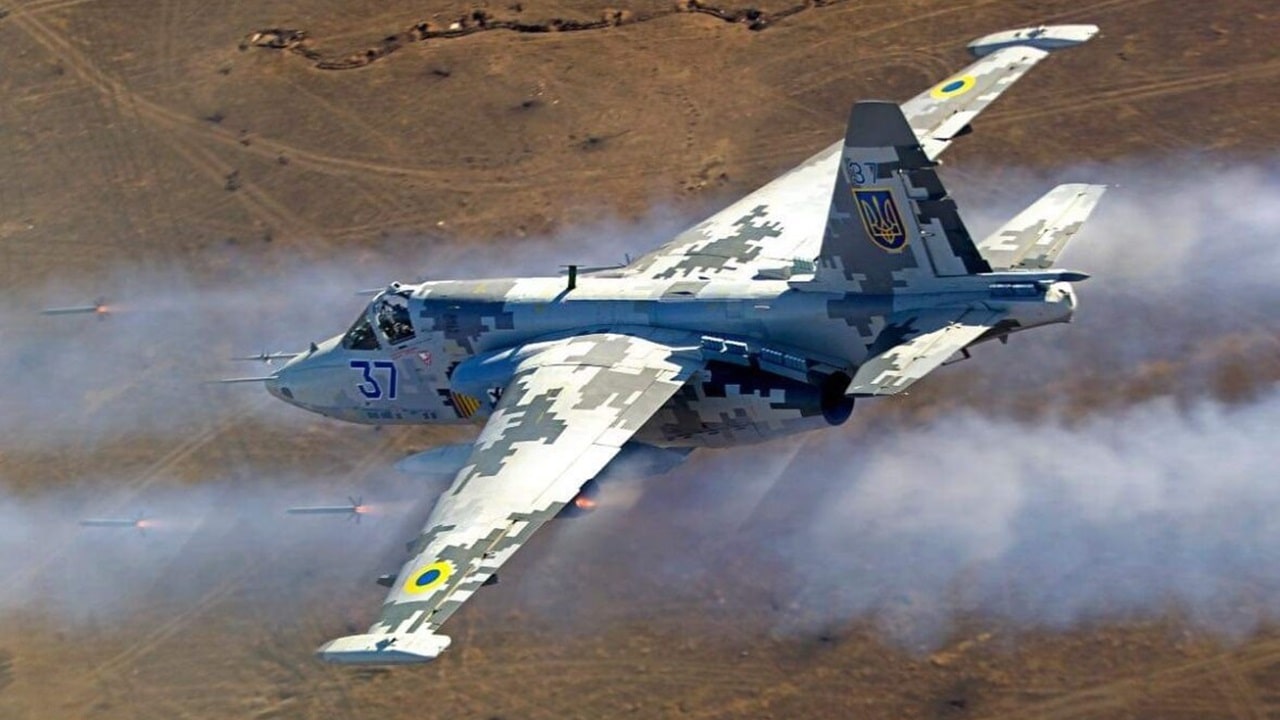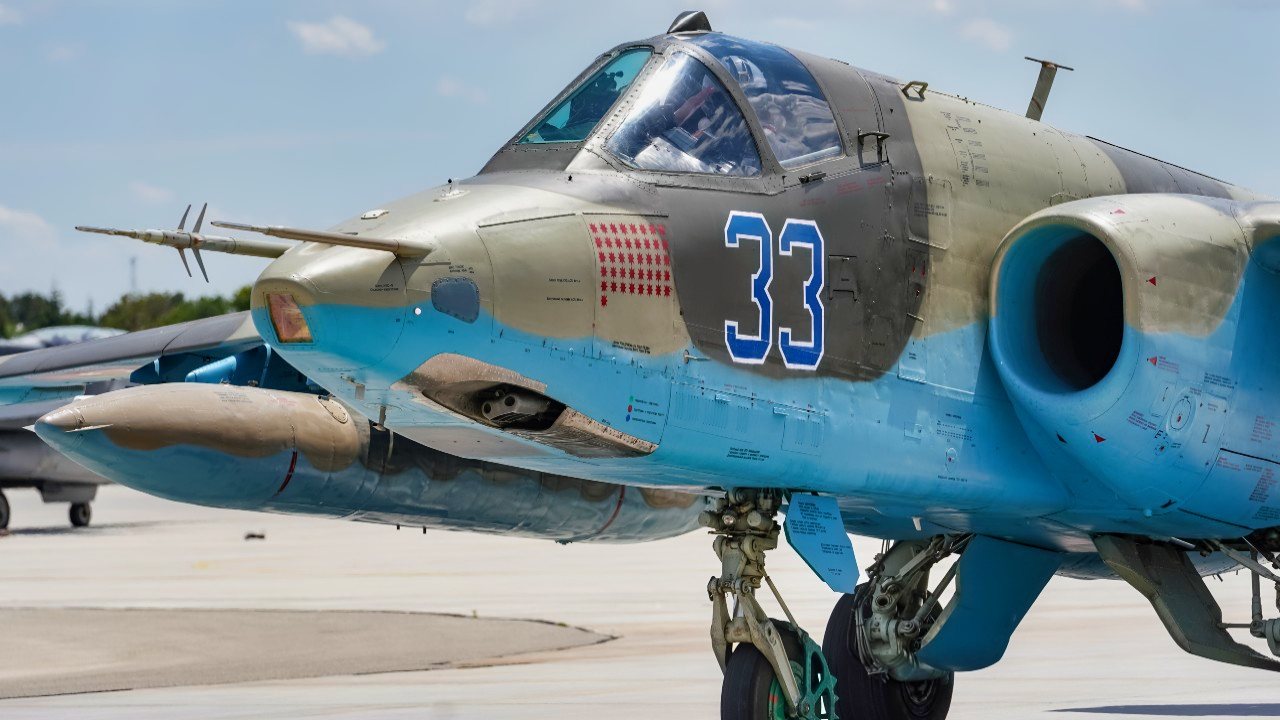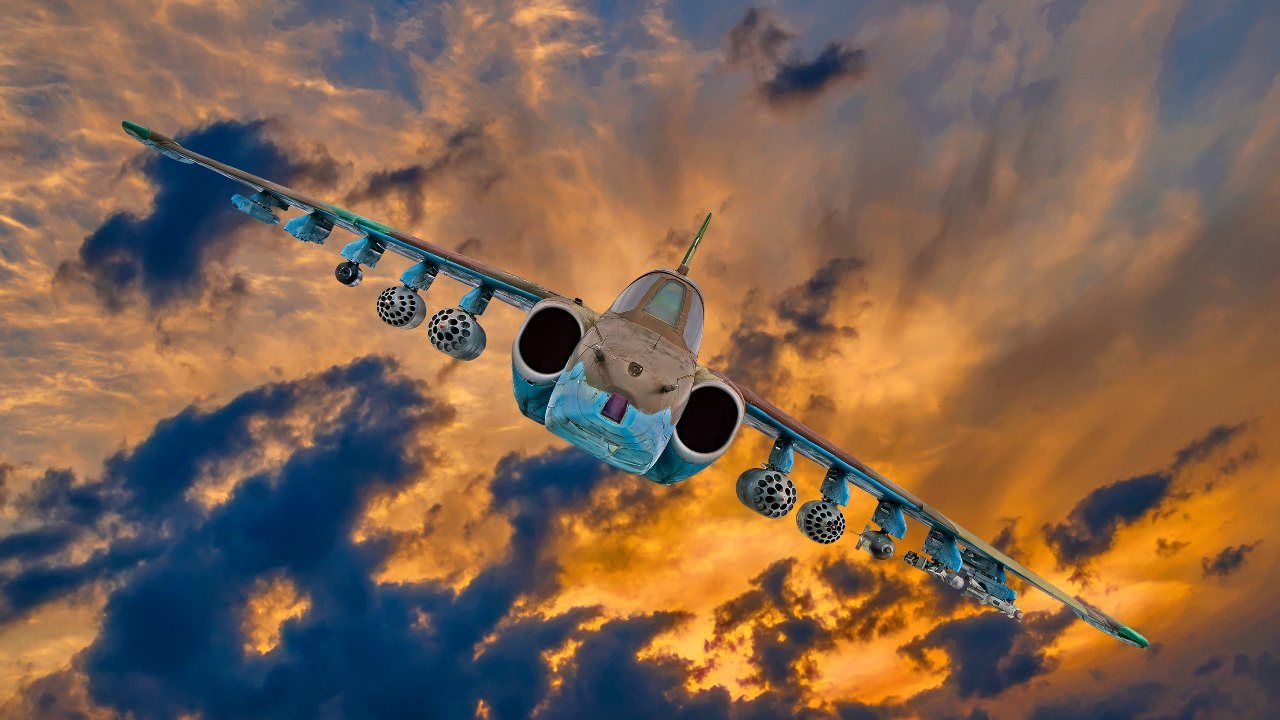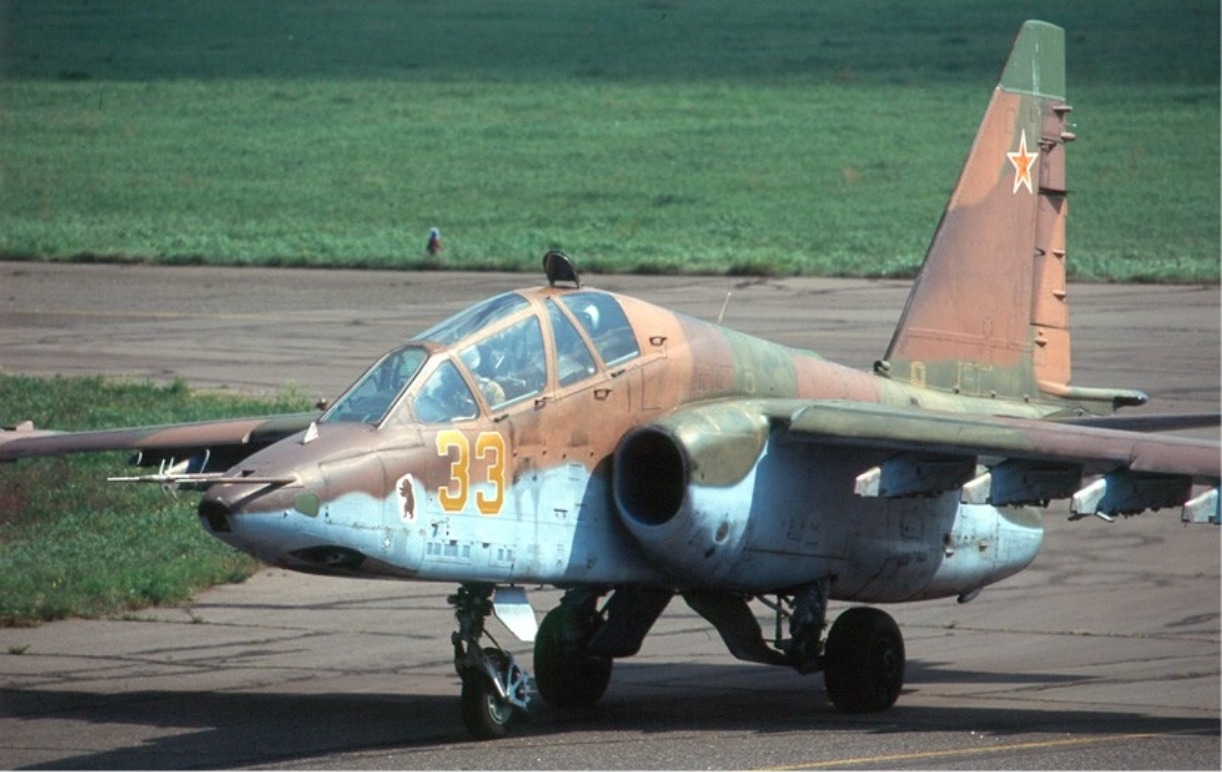
Inside the Cockpit: This Video Is Like Flying a Ukraine Su-25 Flying Tank Bombing Run
Though just 26 seconds long, the clip provided a glimpse of what it is like for Ukrainian pilots to fly low and fast while firing at an enemy position.
Several missiles can be seen launched, while the aircraft’s Radar Warning Receiver (RWR) lit up like a Christmas tree, suggesting the aircraft was facing threats from numerous radar systems including airborne, early warning, and even short-range.
The video was posted by the open-source military intelligence monitor OSINT Technical (@Osinttechnical) and has since been seen more than many times.
Though the GPS coordinates were blurred out, at the end of the clip the aircraft appears to pass over a bombed-out urban center – indicating that this particular sortie may have taken place in the Donbas region of Eastern Ukraine.
Su-25: Close Air Support Aircraft
Developed during the Cold War for the Soviet Ground Forces, the Sukhoi Su-25 Grach (Russian for “Rook” – NATO reporting name “Frogfoot”) is a subsonic, single-seat, twin-engine jet aircraft that was designed to provide close air support.
It has been described as Russia’s “flying tank,” and is broadly analogous to the United States Air Force’s A-10 Thunderbolt II.
However, it is actually employed by both sides – as noted in the recent video.
Powered by two Soyuz/Tumansky R-195 turbojet engines, the Su-25 has a maximum speed of Mach 0.79 or 975 km/h (606 mph), and a range of 1,000 km (620 miles).
It has eleven hardpoints with the capacity to carry up to 4,400 kg (9,700 pounds) of ordnance, including rockets, air-to-air and air-to-surface missiles, and a variety of bombs, including the BETAB-500 concrete-penetrating bomb.
It is also armed with a 30 mm Gryazev-Shipunov GSh-30-2 autocannon with 250 rounds, as well as SPPU-22 gun pods for two 23 mm Gryazev-Shipunov GSh-23 autocannons with 260 rounds.
It first entered service in 1978 and was used extensively during the Soviet-Afghan War to strike at Mujahedeen positions.
Nearly two dozen were lost in combat operations, including nine that were destroyed on the ground.

The Su-25 also proved successful against armored vehicles during the Iran-Iraq War (1980-88), with only one confirmed to have been lost in combat. As a result, Iraqi dictator Saddam Hussein decorated all of the Iraqi Air Force’s Su-25 pilots with the nation’s highest military decoration.

During the Gulf War of 1991, the air superiority of the coalition forces was so great that the Iraqi Air Force never stood a chance.
As a result, seven Su-25s were among the more than three dozen Iraqi aircraft that fled to Iran, while two were shot down in the early stages of the conflict.
Low-level Ukrainian Su-25 operations in the east from fin_foin. pic.twitter.com/gvTgCf9kG2
— OSINTtechnical (@Osinttechnical) March 30, 2023
Russian and Ukrainian Service
More than 1,000 of the Su-25s were produced between 1978 and 2017.
Following the dissolution of the Soviet Union in 1991, both Russia and Ukraine maintained a number of the ground attack aircraft. Some of the Ukrainian Air Force’s Su-25s have been modernized, and a number of previously “retired” jets were made airworthy and returned to service.
Kyiv has also received at least a dozen from the Bulgarian Air Force, and as of 2022, it has thirty-one Su-25s in its air fleet. These continue to be used to conduct attacks against Russian positions as seen in the video.
Russia has maintained even more Su-25s, and the ground attack jet is operated by Russian Aerospace Forces, as well as by the Wagner PMC, the mercenary group that was supporting Kremlin’s war effort in the Donbas region until last year.

The Russian Navy also operates an adapted version of the Su-25UB two-seat trainer, the Su-25UTG, a carrier-capable variant that has been used to carry out deck-landing training aboard Moscow’s sole aircraft carrier Admiral Kuznetsov.
Despite its age, the Su-25 will likely continue to be employed by both sides in the ongoing war in Ukraine.
Author Experience and Expertise: Peter Suciu
Peter Suciu is a Michigan-based writer. He has contributed to more than four dozen magazines, newspapers, and websites with over 3,200 published pieces over a twenty-year career in journalism. He regularly writes about military hardware, firearms history, cybersecurity, politics, and international affairs. Peter is also a Contributing Writer for Forbes and Clearance Jobs<


